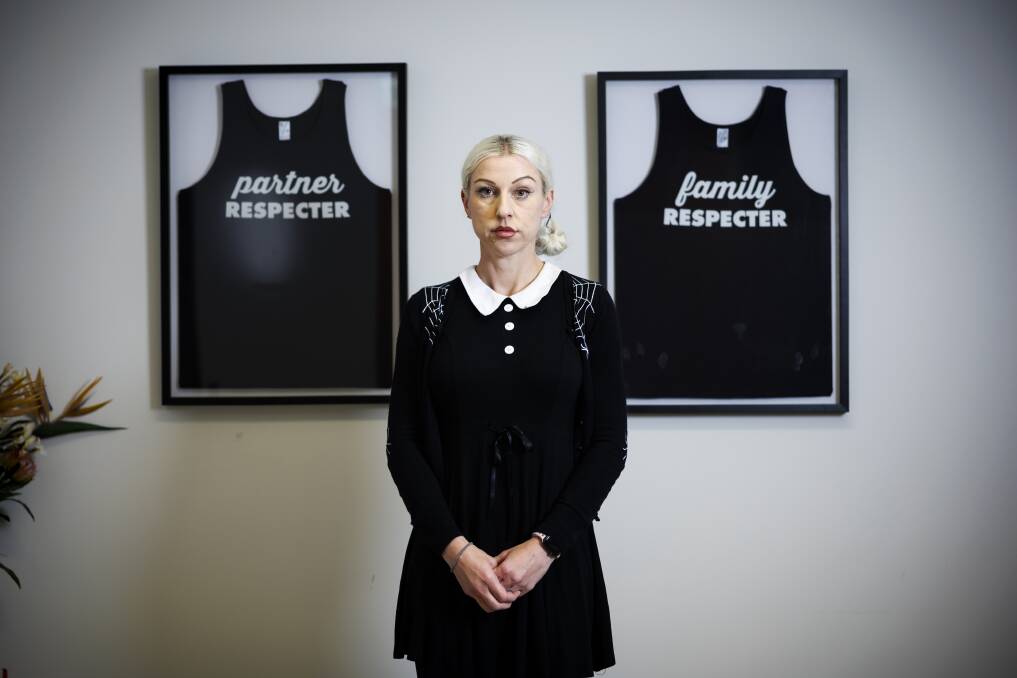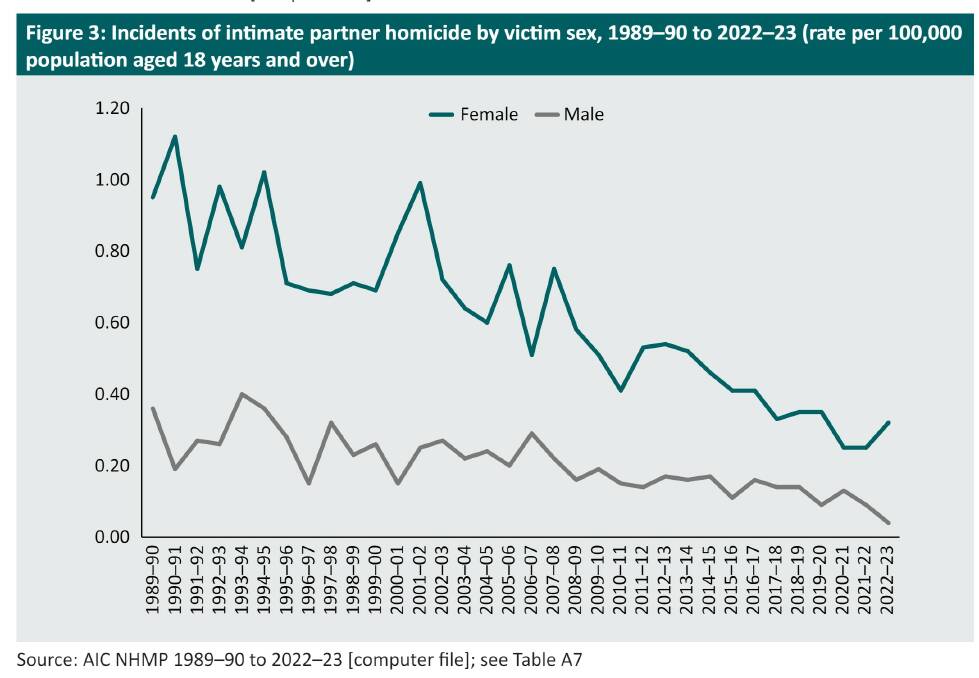The recent spate of murders of women by men is truly shocking.
Any murder is shocking, but the idea that the man who killed six people in Bondi Junction hated women so much he targeted them ought to defy belief.
But the facts are inescapable: of the six victims, five were women and the sixth was the heroic security guard who got in harm's way but who was not, it seems, deliberately pre-targeted.
On top of that, there was the alleged murder of Molly Ticehurst by her former boyfriend. And three women died in the Ballarat region in the space of two months, again allegedly at the hands of men.
What do the figures show?
The number of female victims of murder or manslaughter by a partner or former partner rose in 2022-23, a report by the Australian Institute of Criminology shows.
"The findings of the report confirm through state and territory police offence records and coronial records that female intimate partner homicide increased by 28 per cent," it says.
In 2022-23, there were 38 victims in Australia of "intimate partner violence", the term researchers use for murder and manslaughter by current or former partners.
The victims were nearly always women - nine in every 10.
But there's a 'but'
The year being studied was after lockdown. So, was the latest year's rise because of the emergence from lockdown or is there a much more worrying, fundamental change in behaviour? Are men more likely to murder women or is the year under study just a blip?
Surprisingly, intimate partner homicide seemed to have fallen during lockdown in contrast to the great expectation at the time. So, according to a report author, the latest rise might just be because lockdown figures were low. Intimate partner homicide includes killing of women by former partners, meaning the latter were also locked down during the pandemic.
This, the theory goes, meant they couldn't - or at least didn't - come into contact with their former female partners from whom they were separated. Murders were prevented.
On this reading, the long-term trend is more hopeful than the past year indicates. "The female intimate partner homicide rate decreased overall by two-thirds (66 per cent in the 34-year period between 1989-90 and 2022-23," the report says.
One of the report's authors, Samantha Bricknell, explained: "We've seen a decrease in intimate partner violence in Australia since the early '90s. That decrease has continued into the last decade.

"The increase in 2022-23 may reflect a genuine increase in intimate partner violence or a decrease during the COVID years," Dr Bricknell said.
Dr Bricknell and other researchers will be looking closely at next year's figures to see whether the latest rise continues.
Another theory
Sandra Rajic, who counsels men on violence at the EveryMan organisation, reckons the rise in murder and manslaughter of women is not just a blip but stems from an increasing sense of male "entitlement".
"They don't like the fact that we are able to say, 'No'. A lot more women are being brave and courageous and saying, 'No'," she said.
They don't like the fact that we are able to say, 'No'.
- Sandra Rajic, EveryMan
On this argument, the rise in the killing of women signifies a change in attitudes, particularly where men feed off each other's views in online discussions.

More broadly, who kills whom?
For all types of homicide, men kill men and men kill women.
"Males comprised the majority of offenders in 2022-23 (87 per cent)," the report said.
This is the same percentage as the figures for 34 years ago, in 1989-90. Just over one-quarter of people who kill were aged from 25 to 34.
- Editor's note: An overall homicides statistic has been removed to avoid any confusion about the article's intention to explain the increase in murders of women by men.
- Help is available for those who needs it. Lifeline: 13 11 14; MensLine: 1300 789 978; Kids Helpline: 1800 551 800; beyondblue: 1300 224 636; 1800-RESPECT: 1800 737 732.


